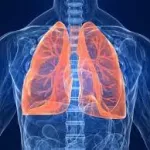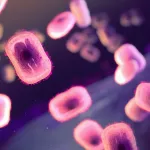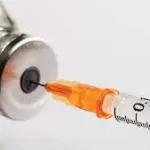NEW ORLEANS, USA – Amidst a growing global health crisis fueled by drug-resistant infections, scientists at Tulane University have unveiled a powerful new artificial intelligence (AI) method capable of predicting antibiotic resistance in deadly bacteria with greater accuracy than current standard approaches. This development holds significant promise for faster diagnosis and more effective treatment of infections like tuberculosis (TB) and staphylococcus (staph).
The challenge of antibiotic resistance is stark. Infections that were once easily treatable are becoming increasingly difficult to manage, leading to longer hospital stays,1 reliance on more toxic or expensive medications, and higher mortality rates. The World Health Organization (WHO) reported that in 2021 alone, 450,000 people developed multidrug-resistant tuberculosis, with treatment success rates falling to a concerning 57%.
Addressing this challenge, the Tulane study, published in the journal Nature Communications, introduces a novel technique called the Group Association Model (GAM). This model leverages machine learning to analyze the entire genetic makeup (whole genome sequences) of bacteria, identifying subtle genetic mutations linked to drug resistance.
Unlike traditional methods, which often rely on pre-existing knowledge of resistance mechanisms or can mistake unrelated genetic changes for resistance markers, GAM operates without these constraints. “Think of it as using the bacteria’s entire genetic fingerprint to uncover what makes it immune to certain antibiotics,” explained senior author Dr. Tony Hu, Weatherhead Presidential Chair in Biotechnology Innovation and director of the Tulane Center for Cellular & Molecular Diagnostics. “We’re essentially teaching a computer to recognize resistance patterns without needing us to point them out first.”
Current resistance detection methods face limitations. Culture-based testing, while thorough, can be time-consuming, delaying crucial treatment decisions. Some rapid DNA-based tests may miss less common or newly emerging resistance mutations. Tulane’s GAM aims to overcome both hurdles by comparing large groups of bacterial strains with differing resistance profiles to pinpoint genetic changes reliably associated with resistance to specific drugs.
In their research, the team applied GAM to vast datasets, including over 7,000 strains of Mycobacterium tuberculosis (Mtb) and nearly 4,000 strains of Staphylococcus aureus (S. aureus). The results showed that GAM not only matched or surpassed the accuracy of the WHO’s existing resistance database but also significantly reduced the occurrence of false positives – instances where bacteria are incorrectly identified as resistant.
“Current genetic tests might wrongly classify bacteria as resistant, affecting patient care,” noted lead author Julian Saliba, a graduate student at the Tulane University Center for Cellular and Molecular Diagnostics. “Our method provides a clearer picture of which mutations actually cause resistance, reducing misdiagnoses and unnecessary changes to treatment.”
Furthermore, when GAM was enhanced with machine learning techniques, its predictive power improved, especially when dealing with limited data. Validation studies using clinical samples from China demonstrated that this enhanced model outperformed WHO-recommended methods in predicting resistance to critical first-line antibiotics.
The ability to quickly and accurately predict antibiotic resistance is vital. It allows clinicians to tailor treatment regimens early, potentially halting the progression of an infection before it becomes more severe or spreads.
The adaptability of the GAM model, stemming from its ability to detect resistance patterns without expert-defined rules, suggests potential applications beyond human medicine, including tracking and managing antibiotic resistance in agriculture.
“It’s vital that we stay ahead of ever-evolving drug-resistant infections,” Saliba emphasized. “This tool can help us do that.”
Disclaimer: This news article is based on information provided regarding a study published in Nature Communications (DOI cited in source: 10.1038/s41467-025-58214-6, though the year appears prospective). It is intended for informational purposes only and should not be considered medical advice. Consult with healthcare professionals for any health concerns or treatment decisions.












